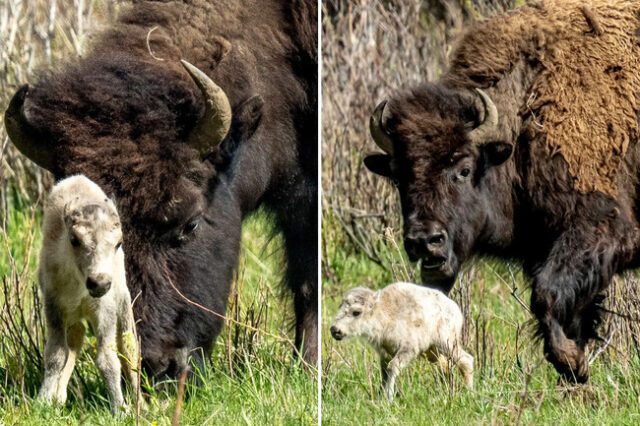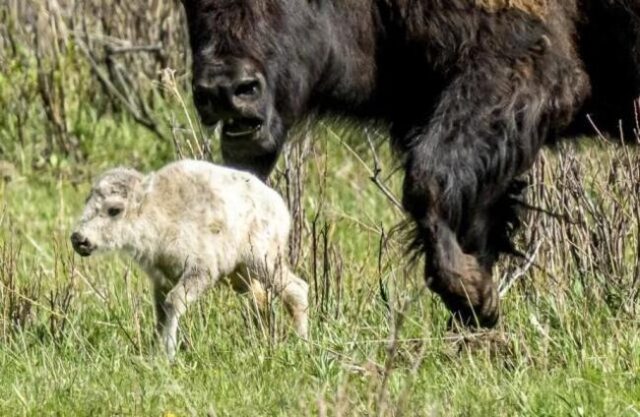
American bison once flourished across the United States, from the western tip of New York state to the eastern edges of Oregon. These magnificent creatures, which can weigh up to 2,000 pounds, were vital as a food source for Indigenous peoples and figured heavily in their history, culture, and beliefs. While millions of bison once roamed the plains, colonial efforts to eradicate them were also an attack on Native culture and resistance to U.S. expansion. Today, while more stable, the wild bison population is only about 30,000. One more extra special individual creature was recently added to this number: a rare white bison calf, born in Yellowstone National Park, spotted by Montana-based photographer Erin Braaten. This remarkable sighting is deeply meaningful to Indigenous religions, as white bison calves hold a sacred significance.

The white bison calf, likely leucistic, was discovered among a distant herd of brown bison. This condition, similar to albinism but with dark eyes and nose, makes the calf a rare and sacred symbol to tribes such as the Sioux, Cherokee, Navajo, Lakota, and Dakota. According to the Lakota prophecy, the arrival of a white calf is a sign for the world to pay closer attention to Earth and animals. Chief Arvol Looking Horse, the spiritual leader of the Lakota, Dakota, and Nakota Oyate stated, “The birth of this calf is both a blessing and warning. We must do more.” He emphasized the profound spiritual significance, relating it to the ancient Lakota oral history of the white buffalo woman who brought hope and renewal. The birth of this white calf has already sparked surprise and joy, capturing the world’s attention and reinforcing the deep cultural and spiritual connections that Indigenous peoples have with these majestic animals.














